
 Home
Home
 Updater
Updater
 Me
Me
 Living
Living
 Sport
Sport
 Work
Work
 Contact
Contact
 Germar's Monthly Updater
Germar's Monthly Updater
|
November 2000: Argentina and New Zealand
November was another exiting month in this year. First, I went to Mar del Plata in Argentina to attend a conference on the impact of the stratosphere on the Earth's climate. Since most of the ozone layer is in this part of the atmosphere any changes influence also the UV radiation reaching the ground. I gave a talk addressing this relationship. One week later I traveled to New Zealand for another meeting. It was the first time that I have been to Argentina. I arrived in Buenos Aires; below is a picture of the city. It is huge. From the 37 millions Argentineans 11 millions live it the country's capital. In contrast to the U.S. cities, where most people live in one or multiple family dwelling, Buenos Aires consists of large apartment buildings.
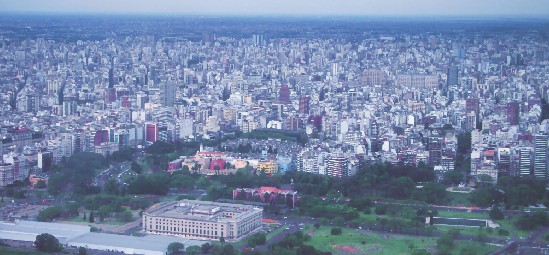
Those buildings need not necessarily be finished before people move in. Below is an example from Mar del Plata. The red house in the background is built onto some concrete structure that has yet to be furbished. Well, if I had a choice, I preferred the Bavarian style of living...
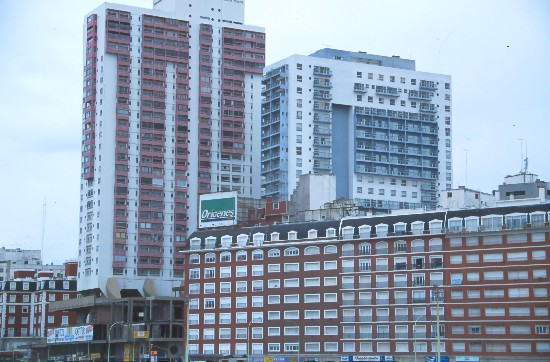
Getting from Mar del Plata to New Zealand took about 24 hours. It's about the same as going from Europe to the U.S. west coast. I felt somewhat tired out after the arrival in Queenstown, my final destination in the middle of New Zealand's South Island. Fortunately, there was a nice opportunity for having a shower. The famous Kawarau Bridge, where commercial bungee jumping was first established, was just around the corner and I decided to have a splashdown. Costing NZ$ 150, it was the most expensive refreshment I've ever had.
Click on thumbnails for enlargement!
Thanks to Gordon for the great shots.
The meeting was about UV instruments and was held at New Zealand's National Institute of Water & Atmospheric Research. I'm sitting below on the institute's porch with my colleagues.
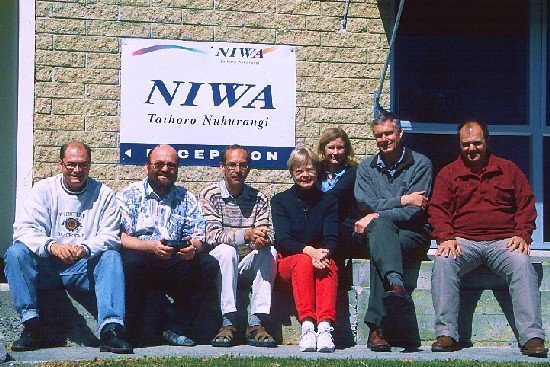
Queenstown is the tourist capital of New Zealand and a paradise for thrill seekers. Within a radius of only few miles, the ingenuity and mechanical wizardry of New Zealanders have combined with the stunning landscape to provide an unrivalled range fo adventure activities. These include: Bungee jumping (see above), heli-hiking and heli-skiing, jet boating, skydiving, flying in a rocket, luge riding, hangliding, rafting, fishing, hiking, golfing, and much more. There is something for everybody's taste, those how need an adrenaline kick, and those who simply want to enjoy unspoiled nature, like the canoers below.
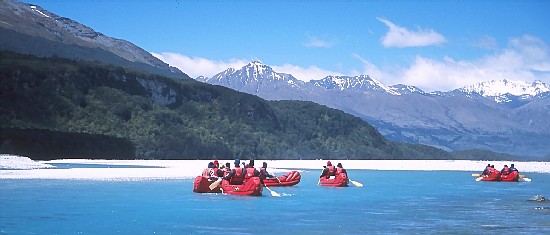
After the meeting was over, I enjoyed with my colleagues a jet boat ride on the Dart river (we deserved it!). The boats need only 10 cm of water under the keel. This means that the drivers steer incredibly close to rocks and the river's banks. It's quite a fun!
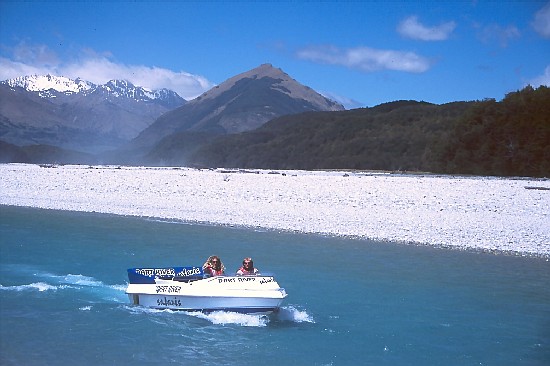
After the boat ride, we finished the day by hiking for some hours on the famous Routeburn Track. Making the whole trek takes about four days. Although we saw only the very beginning, it was a beautiful walk through splendidly isolated country covered by amazingly green meadows.
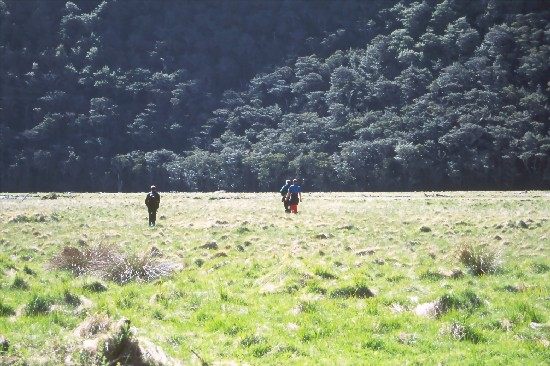
Below is the view from the end point of our hike. Untouched rivers, forests, and mountains.
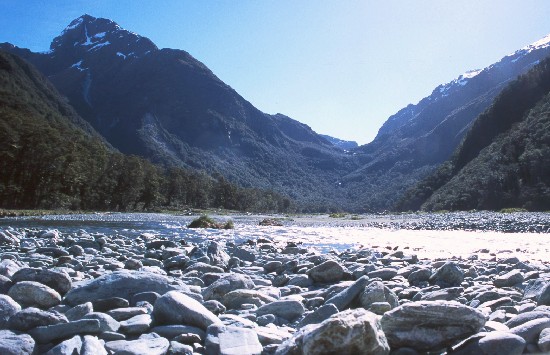
The walk on the Routeburn Track was the last day with my colleagues. Instead of flying back, I decided to extend my stay in New Zealand by a few days. I rented a car and drove south. About 20 miles from Queenstown I was surprised seeing an old steam train, the "Kingston Flyer". It is still in use. Two rides are offered for tourists every day.
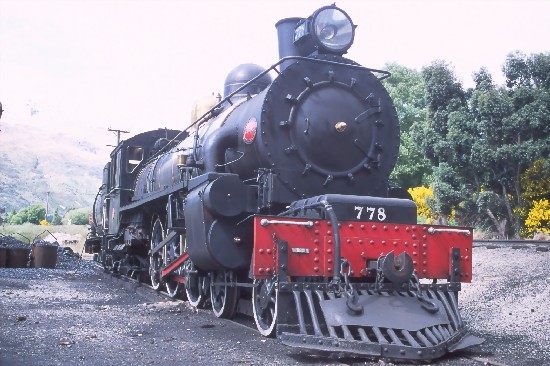
That's a close-up of the train's drive. Mechanics without a single piece of plastic!
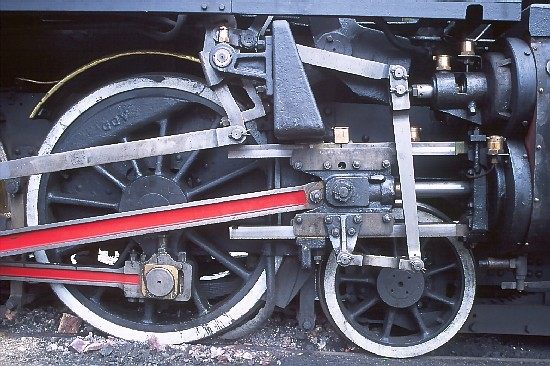
The most stunning sight when driving through New Zealand are sheep. They are everywhere. From the distance the whole landscape appears to be sprinkled by white stones, and when coming closer one has to realize that the stones are moving. New Zealand has about 3.5 million people but more than 40 million sheep (some years ago there were 70 millions). When you find a place without sheep, then there are likely cows, bulls, deers, goats, and even ostriches.

Sheep are truly a part of New Zealand lifestyle. Some of my colleagues raise sheep in the evening after having studied the ozone hole during the day. And even cows seem to be interested in sheep:
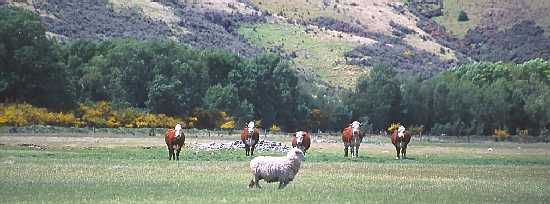
Before the first settlers imported all sorts of animals there were no predators in New Zealand. In fact, there were no mammals (including sheep) living in New Zealand several hundred years ago. Native animals have therefore little fear and are rather curious, like the bird below, inspecting my camera bag. Now, many species are endangered because they are an easy prey for cats, rats, and possums. It has been estimated that 60-100 million possums are currently living in New Zealand (more than sheep!), consuming about 23,000 tons of food every night!
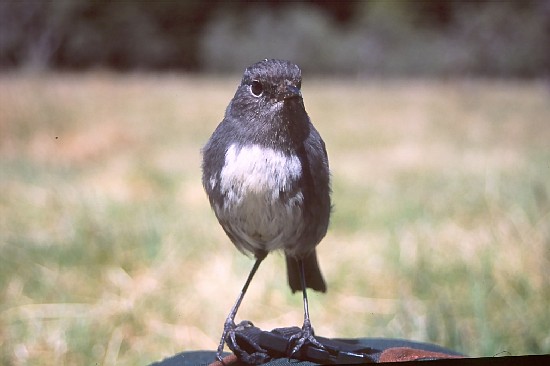
The most curios and funny bird is the Kea, a mountain parrot. It is the only bird enjoying sliding down snow fields on their back (I have seen this once in television). Keas try to inspect everything and they are famous in tearing apart window seals or wiper blades of cars. They even stick their head into the exhaust! The sad thing is that also Keas suffer from human ignorance. Although there are signs everywhere that Keas should not be fed I saw tourists dropping cigarette butts in front of their beak. I hope that these wonderful birds are smarter than people and figure out what's good and bad for them.
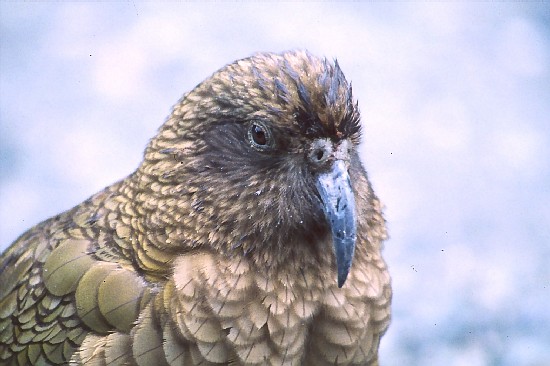
My next stop was Te Anau, a small town in the south-west part of South Island. It the gateway to the Fiordland National Park, one of the greatest wilderness areas of the Southern Hemisphere. The landscape is spectacular and consists of mountains raising almost vertically from the sea, thousands of waterfalls, deep lakes, unbroken rain-forests and tussock grasslands. The vegetation is incredible lavish, thanks to 8-9 meter of rainfall per year. The other day I went on a tour to the Doubtful Sound. This included a one-hour ship cruise over Lake Manapouri. On the other side of the lake is an underground hydroelectric power plant. After visiting it, we went by bus over the mountains to the start of the Sound, located just in the middle of Fiordland National Park. What followed was a four-hour amazing cruise through the Sound to the open sea and back. We saw dolphins and even penguins! The picture below was taken during the crossing of Lake Manapouri.
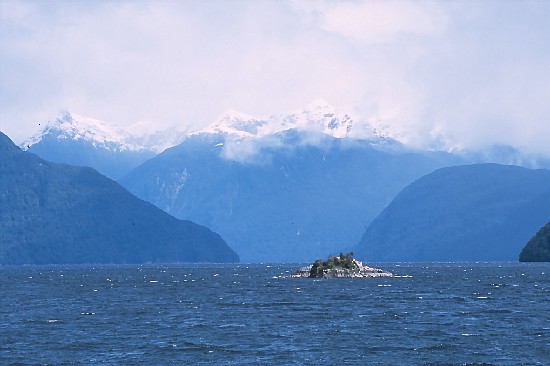
Below is the Manapouri Power Station, built deep inside the mountain.
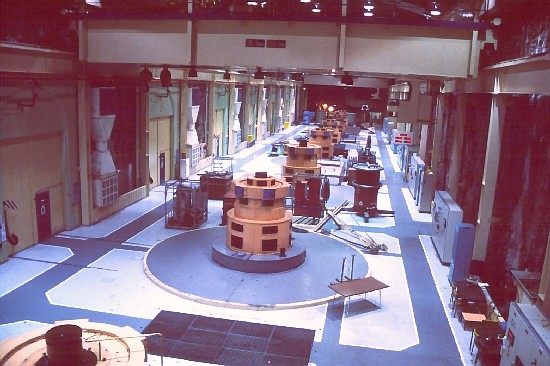
Although it was raining during most of the time this did only little affect the great experience. In fact, the landscape looks more dramatic when the mountain tops are shrouded in mist and clouds, and innumerable waterfalls plunge into the Sound. 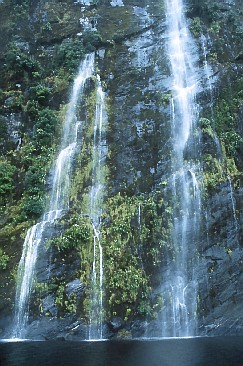
One day later, I drove to Milford Sound, the most famous fiord in New Zealand. It's about 100 km north of Doubtful Sound. The sky was nfortunately still cloudy and it was hard to see the top of the Mitre Peak, the fiord's landmark.
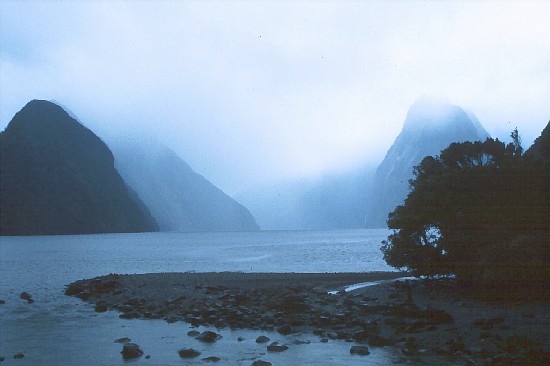
Below is a scanned postcard showing roughly the same scene as the photograph above. Hopefully I have the opportunity sometime to come back when the weather is perfect!
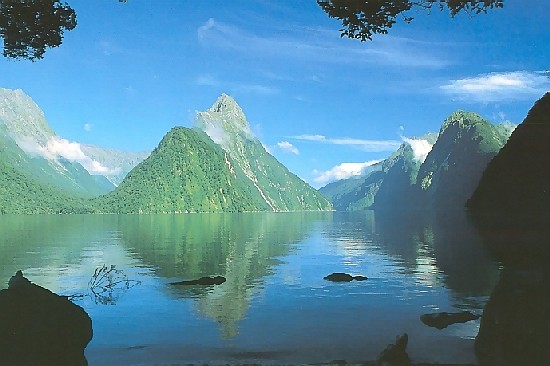
Storms can be fierce in this part of the world, and the windswept trees of Fiordland give a good indication of the rough weather.
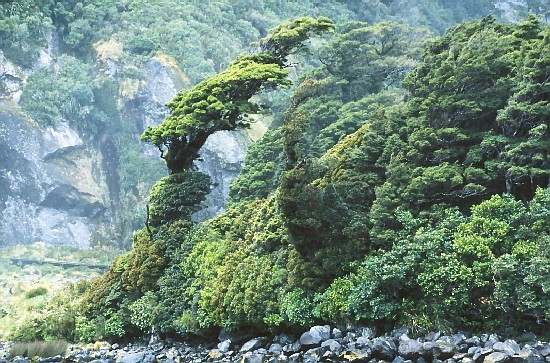
From Milford Sound I continued to the Southern Cost of New Zealand. There were some dramatic views from the road when the clouds suddenly opened, allowing the sun to spotlight lush meadows sprinkled with sheep.
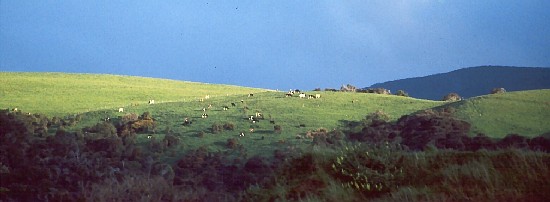
I stayed overnight in a backpacker's Inn in Riverton (the rent was US$ 8.00 :-) before I flew the next day with a six-seat plane to Steward Island in the very south of New Zealand. Steward Island is a paradise for numerous species of wildlife. Since there are only 400 people living on this island life is harsh but peaceful, and dominated by weather and sea. Below is the view from my hotel, located in the center of Oban, the only village of the island.
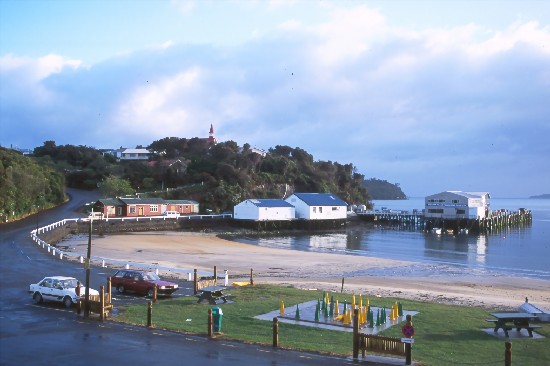
The island's interior is covered with dense forests, filled with all kinds of birds I've never seen before. Most unusual is the wood pigeon as it makes a swishing noise when it flies from tree to tree.
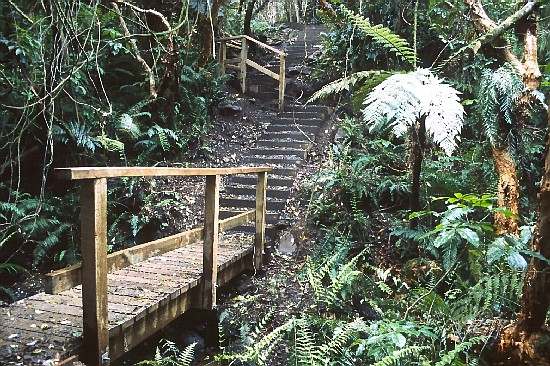
Don't ask me for the name of these birds. But they looked certainly nice with their orange beak as they were wading through the silt.
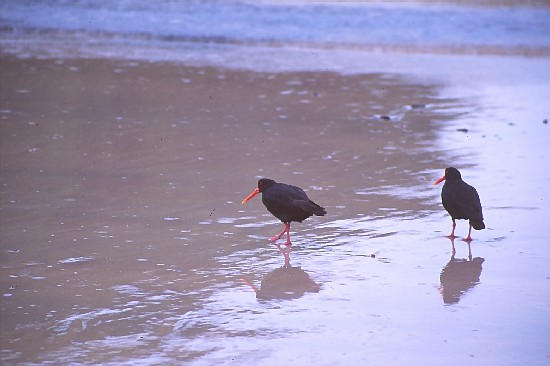
Below is Horseshoe Bay on Steward Island. A beach with perfect sand and certainly no people disturbing tranquility. It's unfortunately a bit far away for spending a weekend.
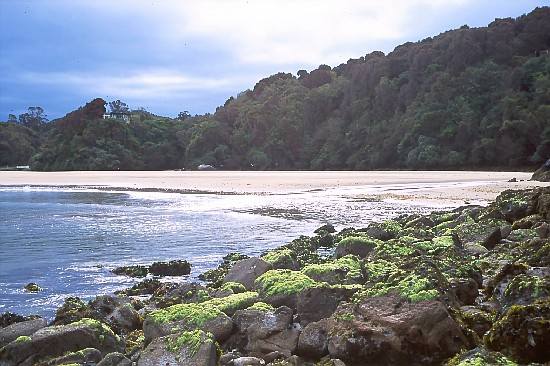
My last day in New Zealand was as antagonistic as a day can be. I left Steward Island in the morning; crossed the rough sea of the Foveaux Strait by boat (with people puking next to me); met someone on the other side of the passage, who was once a roommate of one of my colleagues in McMurdo, Antarctica; drove back to Queenstown; flew to Auckland (The guy next to me was an American of Samoan descent, traveling to Egypt. It turned out that he is living close to me in La Jolla, when he is not travelling); and finally drove up the Sky Tower in Auckland , which is with a height of 328 m currently the tallest man-made building in the Southern Hemisphere. The contrast between peaceful Steward Island in the morning and the pulsing city in the night could truly not have been larger.
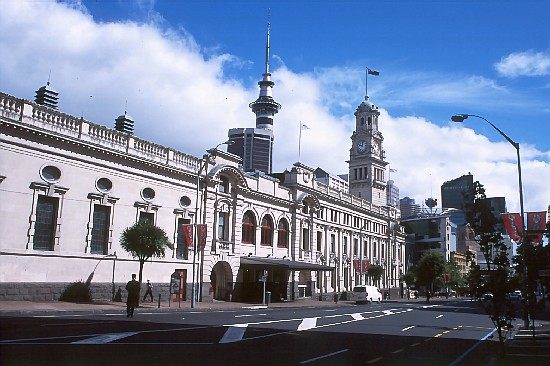
| |||||||
|
Top | Updates from 2000 | Current Updater
Last updated: 23 January 2016
|
|||||||


